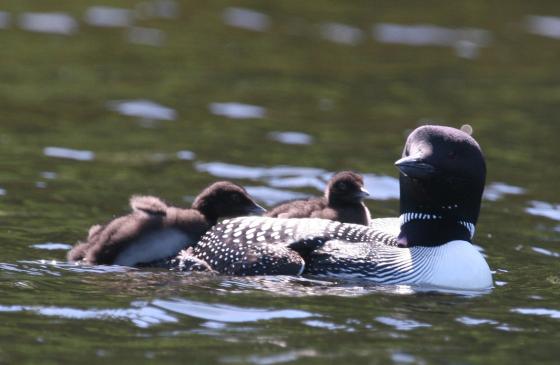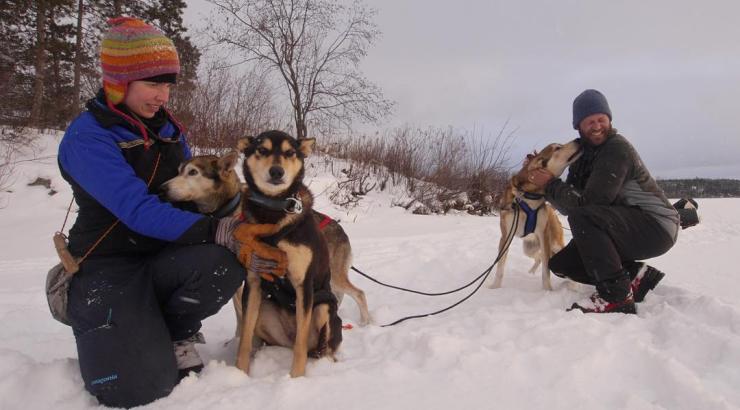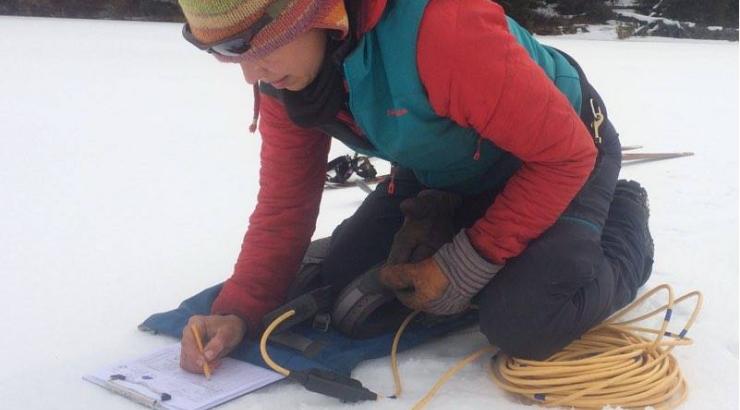Our main goal through A Year in the Wilderness is to raise awareness about the threats that Twin Metals and other sulfide-ore copper mining companies pose to the Boundary Waters Canoe Area Wilderness, and encourage hundreds of thousands of people to speak loudly for the Boundary Waters. We need to permanently protect the Boundary Waters watershed from proposed sulfide-ore copper mining along the edge of the Wilderness. Hundreds of thousands of people must speak out for the Boundary Waters in the coming months to achieve our goal of permanent protection. However, long before Amy and I knew about the mines being proposed along the southern edge of the Boundary Waters, which put our jobs and our way of life a risk, we started introducing young people to the Boundary Waters and wild places around the globe. We are excited to continue to work with students, teachers, and families during A Year in the Wilderness through the Wilderness Classroom.
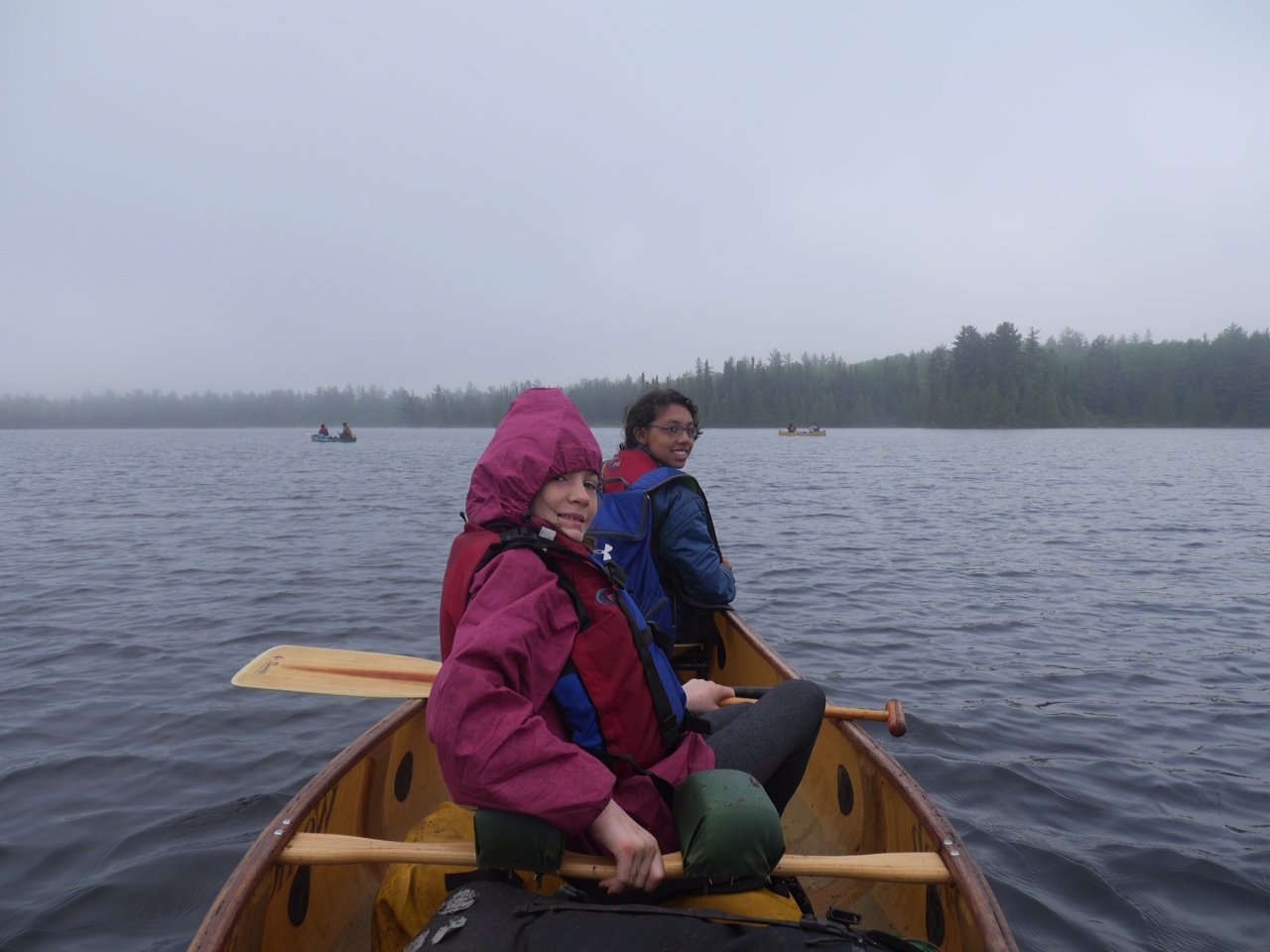 The Wilderness Classroom is a nonprofit organization that I helped start almost 15 years ago. Like many important aspects of my life, the Boundary Waters played central role in the formation of the Wilderness Classroom. In the winter of 2001, I spent six weeks on a solo trek through the heart of the Boundary Waters. My only companion was a trusty sled dog name Tundra who helped me haul two toboggans loaded with food and supplies. I wanted to share the Boundary Waters with others, so I convinced my fifth grade teacher, and four other classrooms from Minnesota, Illinois and Indiana to follow along through a simple blog that I updated with a first-generation satellite phone and an old laptop computer. Afterward, several of the teachers invited me to speak at their schools. While visiting with students, I was blown away by how much they had learned and all of the in-depth questions they asked about the animals I encountered and what it was like to be in the Wilderness. I had stumbled on a new way to spark a kid's interest in Wilderness and nature, and the seeds for the Wilderness Classroom were planted.
The Wilderness Classroom is a nonprofit organization that I helped start almost 15 years ago. Like many important aspects of my life, the Boundary Waters played central role in the formation of the Wilderness Classroom. In the winter of 2001, I spent six weeks on a solo trek through the heart of the Boundary Waters. My only companion was a trusty sled dog name Tundra who helped me haul two toboggans loaded with food and supplies. I wanted to share the Boundary Waters with others, so I convinced my fifth grade teacher, and four other classrooms from Minnesota, Illinois and Indiana to follow along through a simple blog that I updated with a first-generation satellite phone and an old laptop computer. Afterward, several of the teachers invited me to speak at their schools. While visiting with students, I was blown away by how much they had learned and all of the in-depth questions they asked about the animals I encountered and what it was like to be in the Wilderness. I had stumbled on a new way to spark a kid's interest in Wilderness and nature, and the seeds for the Wilderness Classroom were planted.
Over the years the Wilderness Classroom has grown and we expect that more than 100,000 students and 3,500 teachers from schools across the country will participate in A Year in the Wilderness. Through Wilderness Classroom, elementary and middle school classrooms use lesson plans aligned to Common Core Standards, worksheets, blog posts and an interactive map to learn about the Boundary Waters and join us virtually from their classrooms. Plus, kids can use polls to help decide what we study and they can email us questions.
Today's children are tomorrow's decision makers. It will be up to them to protect wild places like the Boundary Waters for future generations. It is critical that we use all of the tools we can to introduce young people to wild places. Tools like the Wilderness Classroom can help introduce young people to the idea of Wilderness and get them excited about being in nature. However, there is no substitute to providing young people with opportunities to visit wild places and spend time in nature.
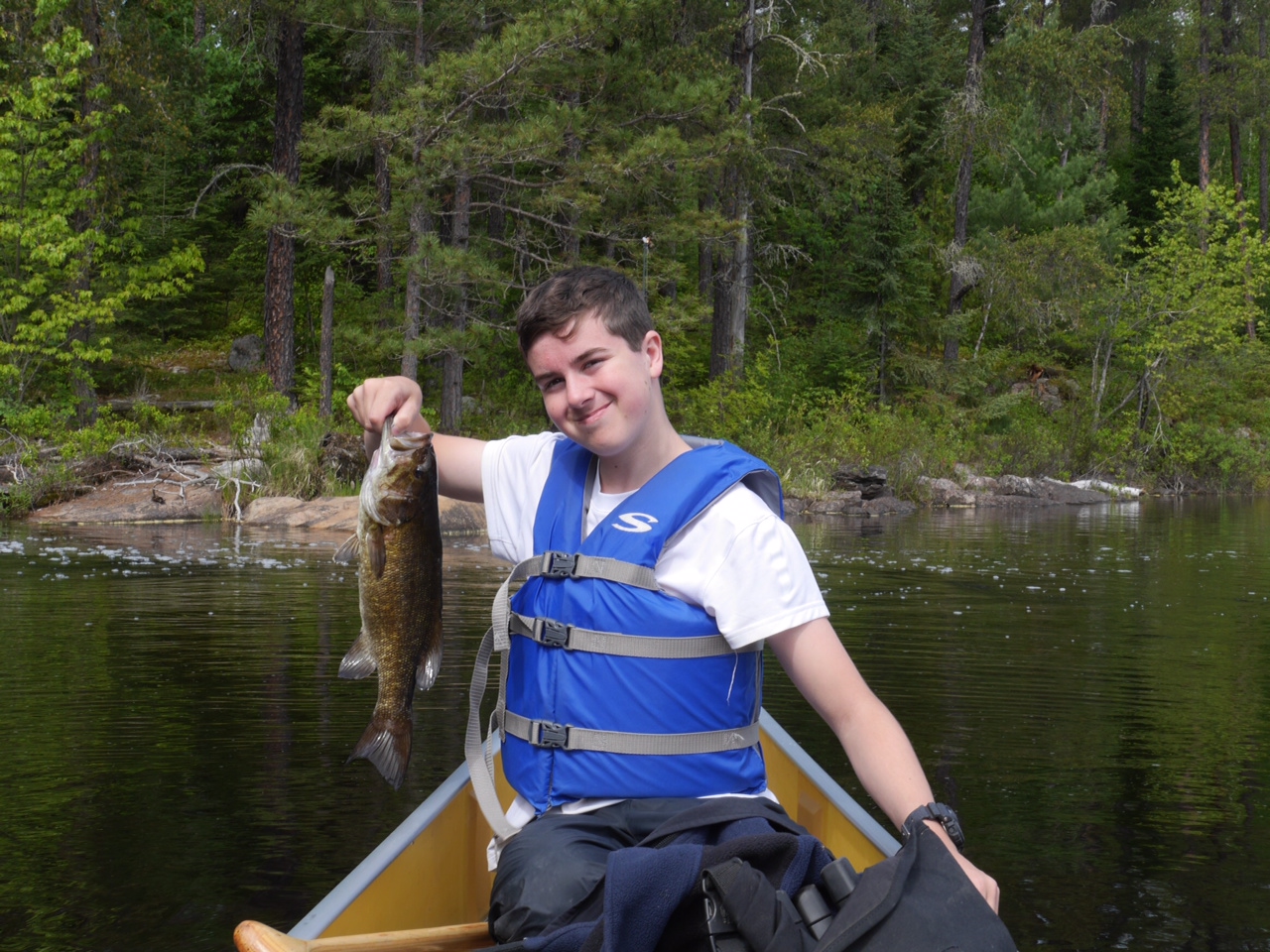 I have had the privilege of leading wilderness canoe trips and dogsled trips for the past 15 years. Most of these trips involve families or groups of young people. I love listening to the call of a loon, feeling the line go taught when a walleye inhales my jig, and gazing at the stars on a cold winter night, but after experiencing these special moments hundreds of times you can start to take these experiences for granted. Introducing young people to the Boundary Waters firsthand provides a constant reminder of how special the Boundary Waters is to so many people.
I have had the privilege of leading wilderness canoe trips and dogsled trips for the past 15 years. Most of these trips involve families or groups of young people. I love listening to the call of a loon, feeling the line go taught when a walleye inhales my jig, and gazing at the stars on a cold winter night, but after experiencing these special moments hundreds of times you can start to take these experiences for granted. Introducing young people to the Boundary Waters firsthand provides a constant reminder of how special the Boundary Waters is to so many people.
For the last few summers, Amy and I have worked with a young teacher from Chicago who started a Wilderness Club at the inner city school where he works. For the Wilderness Club's first camping trip, we took a busload of students to Indiana Dunes State Park, which is about an hour from Chicago. We roasted marshmallows, went hiking and slept in tents. All of these were new and exciting experiences for most of the students. I will never forget standing on the beach looking out over Lake Michigan with a group of students. One of the girls smiled at me and said that she had never been to the beach before. She lives five miles from Lake Michigan.
Every summer since, Mr. DiChara has brought a group of students up to the Boundary Waters. The Wilderness Club takes several trips each year to the Indiana Dunes, they go canoeing on nearby rivers, and explore the natural world near home. The Boundary Waters canoe trip is a reward for the most dedicated students who participate in all of the other Wilderness Club activities and maintain a good academic record.
Last summer, Mr. DiChara and his students piled out of the van after a 11-hour drive from Chicago and we had the canoes loaded an hour later. As we paddled across Sawbill Lake at dusk, we spotted a pair of loons with two fuzzy chicks riding on one of their parent's backs, moments later a moose and her calf swam across the lake in front of our canoes and we watched them emerge from the water and stare at us before crashing through the woods.

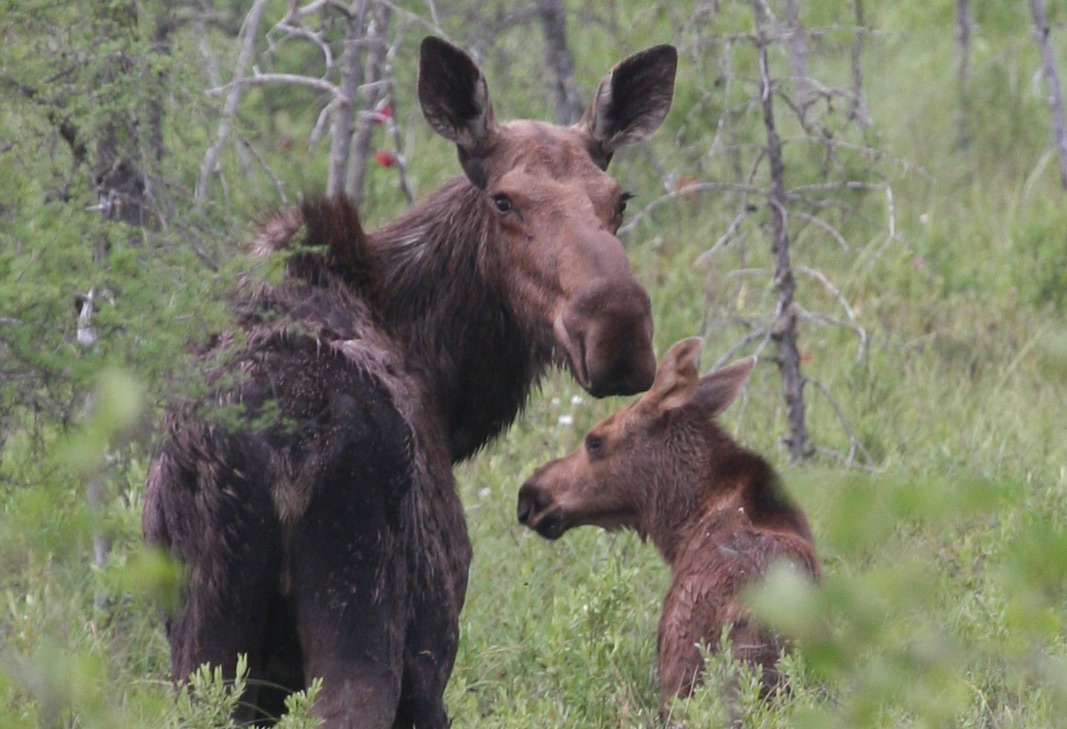
It was dark by the time we had camp set up and the dinner dishes cleaned. Everyone was tired, but it was a moonless night and the Milky Way arched across the sky. We piled in the canoes and floated off the campsite staring up at the stars.
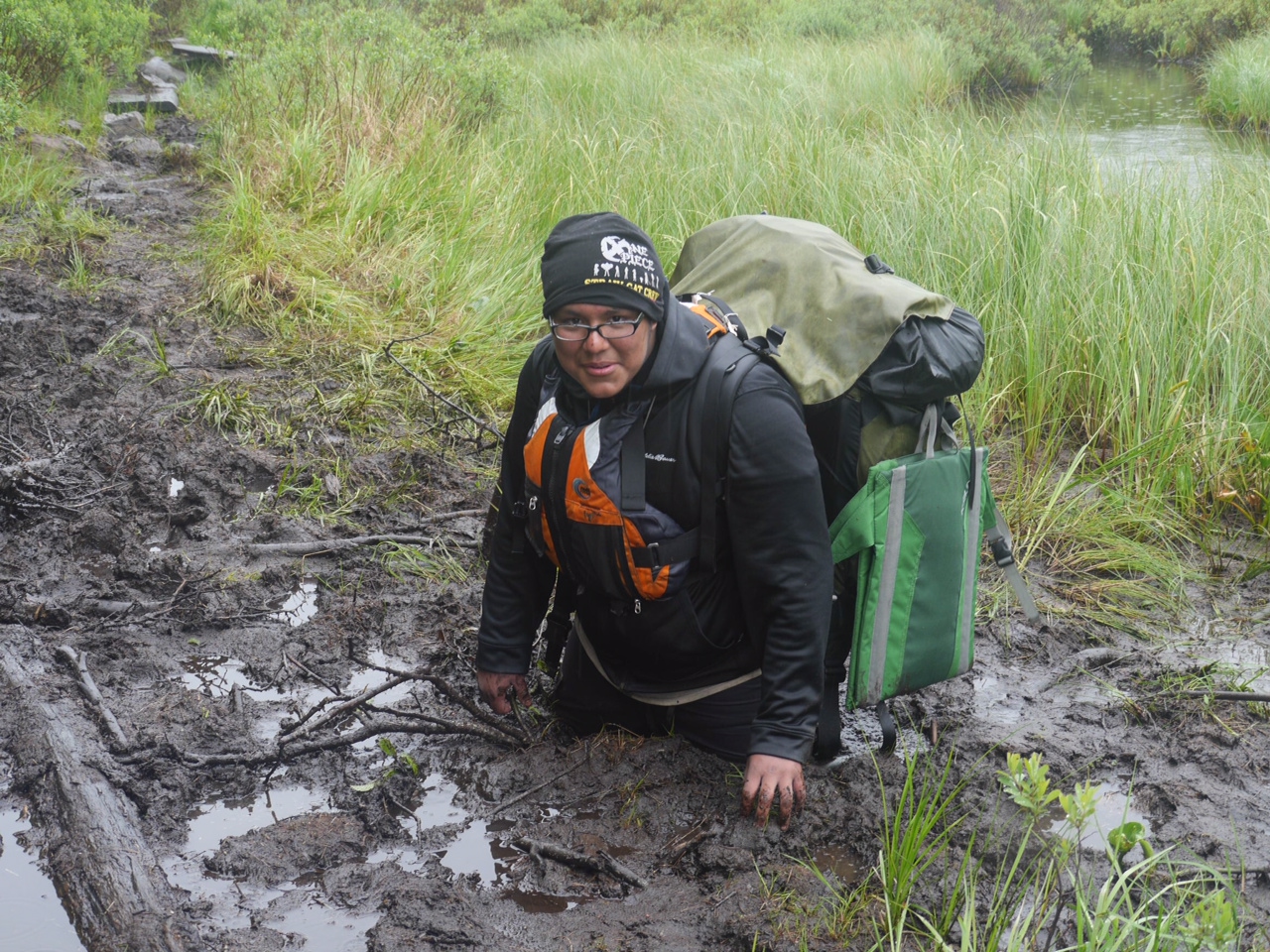 On the last day of our trip, we paddled down Sawbill Lake. It had been raining hard all day (the next day we would learn it rained more than two inches). We planned to camp on our first night's campsite just a mile from our take out because Mr. DiChara and the students had to drive home the next day. I mentioned to Mr. DiChara that we could paddle all they way into the landing and camp at the Sawbill campground if the group wanted. We asked Brandon, one of the older students, what he thought we should do. He looked at us for a second and said, "that's easy, we should stay in the Wilderness," so that's what we did.
On the last day of our trip, we paddled down Sawbill Lake. It had been raining hard all day (the next day we would learn it rained more than two inches). We planned to camp on our first night's campsite just a mile from our take out because Mr. DiChara and the students had to drive home the next day. I mentioned to Mr. DiChara that we could paddle all they way into the landing and camp at the Sawbill campground if the group wanted. We asked Brandon, one of the older students, what he thought we should do. He looked at us for a second and said, "that's easy, we should stay in the Wilderness," so that's what we did.
This year, the Wilderness Club is adding an environmental justice component. They are helping spread the word about saving the Boundary Waters in their community and using their experiences in the Boundary Waters and natural places to help protect the Boundary Waters. The Wilderness Club is also organizing a resupply trip next summer as a way to help Amy and me during A Year in the Wilderness.
Dave and Amy Freeman, 2014 National Geographic Adventurers of the Year, are dedicated to protecting the Boundary Waters from sulfide-ore copper mining proposed on its wilderness edge. In 2014, they paddled and sailed 101 days and 2,000 miles from Ely, MN, to Washington, DC, on the Paddle to DC. They are now spending a year in the Boundary Waters on A Year in the Wilderness. Follow their journey on social media (#WildernessYear) and by tracking the trip on their map. More A Year in the Wilderness blog posts.
